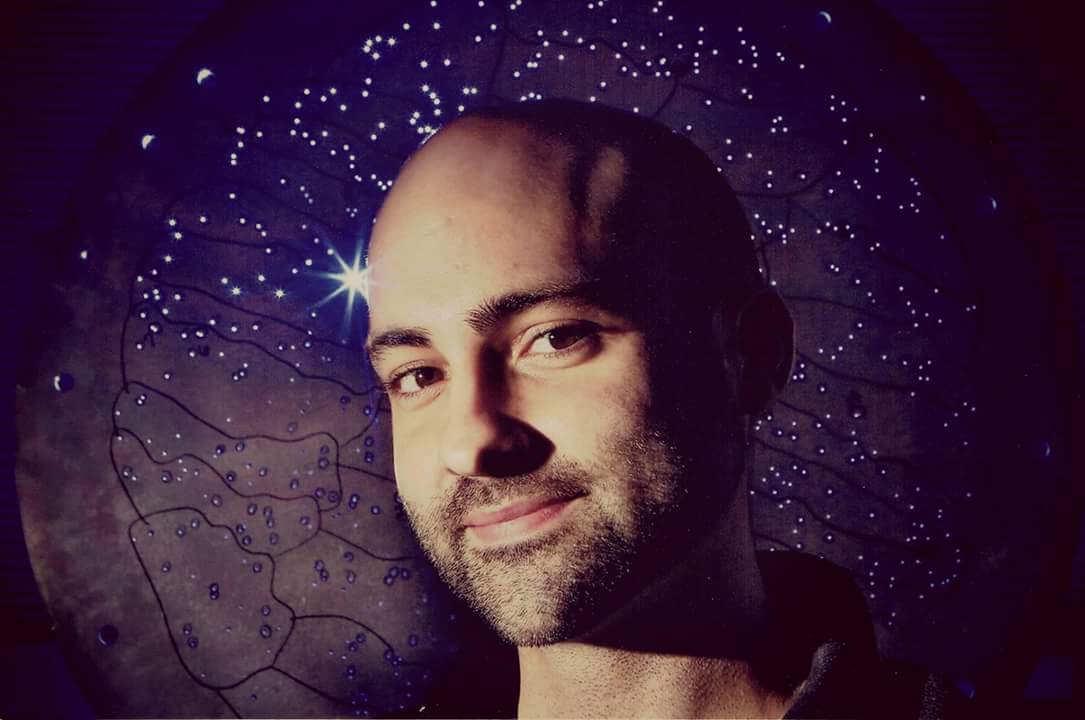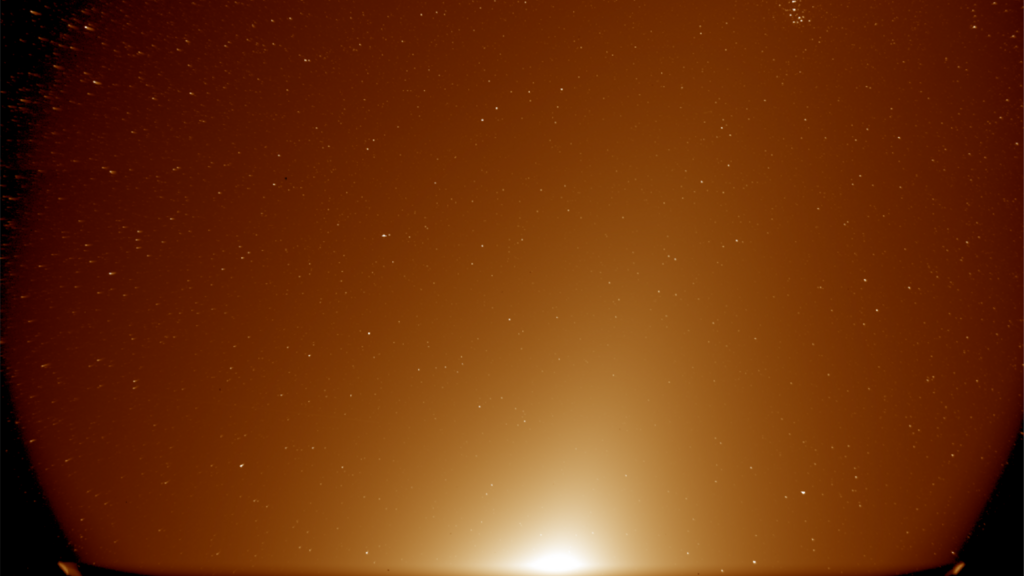The universe might be shaped like a doughnut, not like a pancake, new research suggests
The universe may be flat, but could still be shaped like a doughnut, weird patterns in leftover light from the Big Bang suggest.

The universe could, in fact, be a giant doughnut, despite all of the evidence suggesting it's as flat as a pancake, new research suggests.
Strange patterns found in echoes of the Big Bang could be explained by a universe with a more complicated shape, and astronomers have not fully tested the universe's flatness, the study finds.
Related: What shape is the universe?
Flat surfaces
All observations so far suggest the universe is flat. In geometry, "flatness" refers to the behavior of parallel lines as they go out to infinity. Think of a tabletop: Lines that start out parallel will remain that way as they extend along the table length.
In contrast, look at Earth. Lines of longitude begin perfectly parallel to each other at the equator but eventually converge at the poles. The fact that parallel lines initially intersect reveals that Earth is not flat.
The same logic applies to the 3D universe. For instance, the cosmic microwave background (CMB) — light released when the cosmos was only 380,000 years old — now sits over 42 billion light-years away and features tiny fluctuations in temperature across the sky. Astronomers have calculated the predicted size of those fluctuations compared with observations. If their measured size differs from predictions, that means those rays of light, which started out parallel, changed directions over space-time, indicating that the geometry of the universe is curved.
But those same measurements have revealed that, ignoring small-scale deflections from galaxies and black holes, the overall geometry of the universe is flat.
Get the Space.com Newsletter
Breaking space news, the latest updates on rocket launches, skywatching events and more!
Different types of flat
But there's more than one kind of flat. For example, draw parallel lines on a piece of paper. Then wrap one end of the paper to connect with the other, forming a cylinder. The lines remain parallel as they circle the cylinder. In the language of mathematics, any cylinder is geometrically flat but is said to have a different topology. Close up both sides of the paper, and you make a torus, or doughnut shape.
To get another example of a weirdly flat shape, wrap a thin strip of paper in a circle, but make a 180-degree twist in one end. The end result is a Möbius strip, which is still geometrically flat, because parallel lines stay parallel, even when they flip over each other.
Mathematicians have discovered 18 possible geometrically flat, 3D topologies. In each one, at least one dimension wraps up on itself, and sometimes, they flip over like a Möbius strip or make partial rotations. In such a twisty universe, if we looked far away, we would see a (maybe upside-down) copy of ourselves from a much younger age. For example, if the universe were 1 billion light-years across, astronomers would see a version of the Milky Way galaxy as it was 1 billion years ago and, behind that, another copy from 2 billion years ago, and so on.
If the universe were a giant doughnut, astronomers could look in two directions to see such copies.
The universe's shape
Astronomers have measured the topology of the universe in multiple ways, from looking for duplicates of patterns of galaxies to matching circles in the CMB. All evidence suggests the universe is both geometrically flat and has a simple unwrapped topology.
But a paper published Feb. 23 to the preprint database arXiv suggests that past measurements have been limited. Most notably, observations have assumed that the universe wraps around itself in only one dimension and does not have a more complicated topology. Also, observations of the CMB have revealed some strange, unexplained anomalies, like large patterns appearing where they shouldn't.
In fact, a universe with a complicated topology could explain at least some of the anomalies in the CMB. While this isn't an iron-clad case for complicated topologies, the researchers offered ideas for more sophisticated direct searches, like follow-up studies of the CMB.
In that case, there may be a mirror image of us somewhere in our twisty universe.
This story originally appeared on Livescience.
Join our Space Forums to keep talking space on the latest missions, night sky and more! And if you have a news tip, correction or comment, let us know at: community@space.com.

Paul M. Sutter is an astrophysicist at SUNY Stony Brook and the Flatiron Institute in New York City. Paul received his PhD in Physics from the University of Illinois at Urbana-Champaign in 2011, and spent three years at the Paris Institute of Astrophysics, followed by a research fellowship in Trieste, Italy, His research focuses on many diverse topics, from the emptiest regions of the universe to the earliest moments of the Big Bang to the hunt for the first stars. As an "Agent to the Stars," Paul has passionately engaged the public in science outreach for several years. He is the host of the popular "Ask a Spaceman!" podcast, author of "Your Place in the Universe" and "How to Die in Space" and he frequently appears on TV — including on The Weather Channel, for which he serves as Official Space Specialist.
-
Unclear Engineer So far, this looks more like "Playing with Mathematics 101" than "explaining observations".Reply
And, that definition of "flat" seems inadequate to determine what most people call "flat", which is a plane, not a cylinder, or a donut. or any other shape where "parallel" straight lines do not intersect each other. My definition of "flat" incudes that lines do not intersect themselves. If they do, then I, and probbly most others, would call it "curved".
And, how would we even recognize an image of our own galaxy from 1 or 2 billion years ago? -
Seeker I have been waiting for this thing to come up mainstream. This is the truth. We may confirm it in a couple of decades or so. Moving in the right progression of knowledge...Don't ask from where I know this truth...(Many know this)Reply -
mokeshame I think direction has no absolute meaning in this universe. still itconfirms to some rules. Because multiple dimensions more than three can pop up anywere in a spaceregion. Less dimensions also For instance i think the fact we see three dimensions is because of the giant black hole type in the centre of our galaxy. It copies both axis into a third one in a certain way. The quasar is some representation of the third axis. Because we are in it we must see all space outside the 3d region also as 3d, even if it isnt. Its some type of inverted lens. And we cant hold it up foreever that it is. We can't predict dimensionsregions yet. So the universe looks flat because two dimensions are mainstream outside ours. The third one is made up within our galaxy.Reply -
Unclear Engineer I just realized that this article supports the "Flat Earthers".Reply
Specifically, because (these?) mathematicians consider a torus (donut) to be "flat" simply because "parallel" lines on its surface do not intersect, consider a torus that is deformed into a sphere with its central axis compressed into a cylindrical shape with its width so small that it is basically "Planck space" so that we cannot detect it. Still meridians are lines that have zero width, so those could go to say, the north pole, through the central undetectable "hole" to the south pole, then back onto the spherical part of the surface, and never intersect at the poles. Voila, a "flat Earth" that is indistinguishable from the Earth as we see it (at least to the mathematicians that are the subject of this article). At least to them, it is not possible to prove the Earth isn't "flat" by observation.










